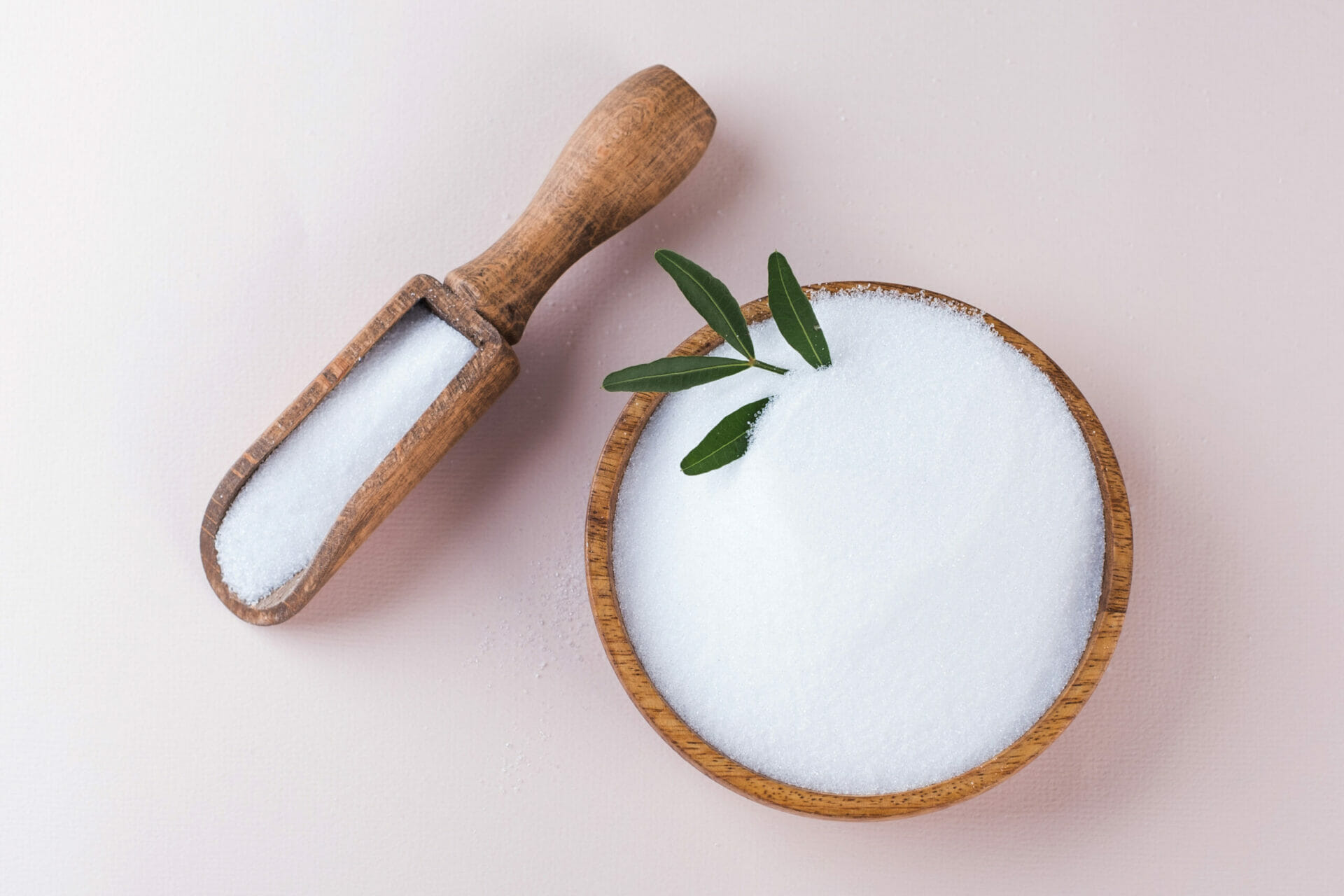Sugar Alternatives: Sweetening the Deal
Food and beverage producers should carefully consider which sweetener options are best for their products and begin formulating accordingly. Read more from Bob Wills, Director of Sales for Food, Beverage and Nutrition for Market Acceleration Group.
It’s no secret that consumers have a sweet spot for sugar. The beloved and often-craved ingredient remains as relevant now as it was hundreds of years ago when European colonists first stepped foot in the Americas (1).
Today, the United States is the fourth largest sugar producer in the world (2), with 74 percent of U.S. food supply chain products containing caloric or low-calorie sweeteners (3). The beverage sector is the largest user of sugar, closely followed by the canned, bottled and frozen foods industries (2).
Extensive research indicates that high sugar consumption can directly cause a wide range of health problems ranging from tooth decay to cardiovascular disease (2) and consumers have caught on. Trends in purchase behavior indicate strong movement toward products with non-caloric sweeteners to address those concerns—warranting close attention by manufacturers (3).
Natural Versus Artificial Sweeteners
Natural sweeteners come from nature and include ingredients such as maple syrup, honey, molasses, coconut sugar and agave nectar. Sugarcane, the most popular and recognizable natural sweetener, is the initial source of granulated white, light brown, dark brown and powdered sugars (4).
Artificial sweeteners are synthetic substances used to replace sugar. These sweeteners can be either nutritive (calorie-adding) or non-nutritive (zero calories). Often called “intense sweeteners,” they’re much sweeter than sugar, and as such, desired sweetness levels can be achieved with smaller amounts (4).
Stevia Reb M: Sweet and Stable
Steviol sweeteners are extracted and purified from Stevia Rebaudiana Bertoni, a plant native to South America. All major food safety authorities have deemed Stevia to be safe for consumption. Since 2011, around 14,000 products containing Stevia have been launched worldwide (5). Stevia Reb M, a zero-calorie variant rising in popularity, has intense sweetness and tastes more like sugar than other stevia varietals with minimal aftertaste. It is generally heat-stable and can enhance other food flavors, which makes it desirable for producers.
Erythritol: The Fermented Factor
Erythritol is a unique, zero-calorie natural bulk sweetener produced by fermentation (6). While it is only 70% as sweet as sugar, it is widely used in beverages, chewing gum, candies and more (7). Erythritol is tooth-friendly, safe for diabetics and easier for consumers to digest than some other options. Its low solubility and ease of crystallization are of note for manufacturers, specifically for products requiring a crystalline sweetener (6).
Sucralose: Sweetener For All
Sucralose is a high-quality and intense artificial sweetener used at home and in food manufacturing facilities. It’s suitable for high temperatures and remains stable for extended periods of time. Sucralose is 600 times more than sugar and maintains a flavor profile that blends well with most products. Sucralose is best suited for products marketed as “light” to consumers (8).
As Sweet As It Seems…
Replacing sugar in food and beverage products isn’t easy. Alternatives can’t replace the texture, viscosity and taste that sugar provides, and working with sugar replacements can require adding bulking agents to help mimic sugar (9).
With that said, when formulated appropriately, sugar replacements have virtually limitless uses. Manufacturers have options—from flavored and carbonated beverages to snack products to confectionaries and more. Food and beverage producers should carefully consider which sweetener options are best for their products and begin formulating accordingly.
Resources
- Mimi Goodall, The rise of the sugar trade and sugar consumption in early British America, 1650–1720, Historical Research, Volume 93, Issue 262, November 2020, Pages 678–691, https://doi.org/10.1093/hisres/htaa022
- Jensen, Helen H. and Beghin, John C. (2015) “U.S. Sweetener Consumption Trends and Dietary Guidelines,” Iowa Ag Review: Vol. 11: Iss. 1, Article 5.
- Barry M Popkin, Corinna Hawkes, Sweetening of the global diet, particularly beverages: patterns, trends, and policy responses, The Lancet Diabetes & Endocrinology, Volume 4, Issue 2, 2016, Pages 174-186, ISSN 2213-8587, https://doi.org/10.1016/S2213-8587(15)00419-2.
- Bulletin of the Transilvania University of Braşov Series V: Economic Sciences • Vol. 7 (56) No. 1 – 2014 ARTIFICIAL SWEETENERS VERSUS NATURAL SWEETENERS
- Priscilla Samuel, Keith T Ayoob, Bernadene A Magnuson, Ursula Wölwer-Rieck, Per Bendix Jeppesen, Peter J Rogers, Ian Rowland, Rebecca Mathews, Stevia Leaf to Stevia Sweetener: Exploring Its Science, Benefits, and Future Potential, The Journal of Nutrition, Volume 148, Issue 7, July 2018, Pages 1186S–1205S, https://doi.org/10.1093/jn/nxy102
- Röper, H. and Goossens, J. (1993), Erythritol, a New Raw Material for Food and Non-food Applications. Starch/Stärke, 45: 400-405. https://doi.org/10.1002/star.19930451107
- Boesten, D.M.P.H.J., den Hartog, G.J.M., de Cock, P. et al. Health effects of erythritol. Nutrafoods 14, 3–9 (2015). https://doi.org/10.1007/s13749-014-0067-5
- Bulletin of the Transilvania University of Braşov, Series V: Economic Sciences • Vol. 7 (56) No. 1 – 2014. ARTIFICIAL SWEETENERS VERSUS NATURAL SWEETENERS
Priscilla Samuel, Keith T Ayoob, Bernadene A Magnuson, Ursula Wölwer-Rieck, Per Bendix Jeppesen, Peter J Rogers, Ian Rowland, Rebecca Mathews, Stevia Leaf to Stevia Sweetener: Exploring Its Science, Benefits, and Future Potential, The Journal of Nutrition, Volume 148, Issue 7, July 2018, Pages 1186S–1205S, https://doi.org/10.1093/jn/nxy102
